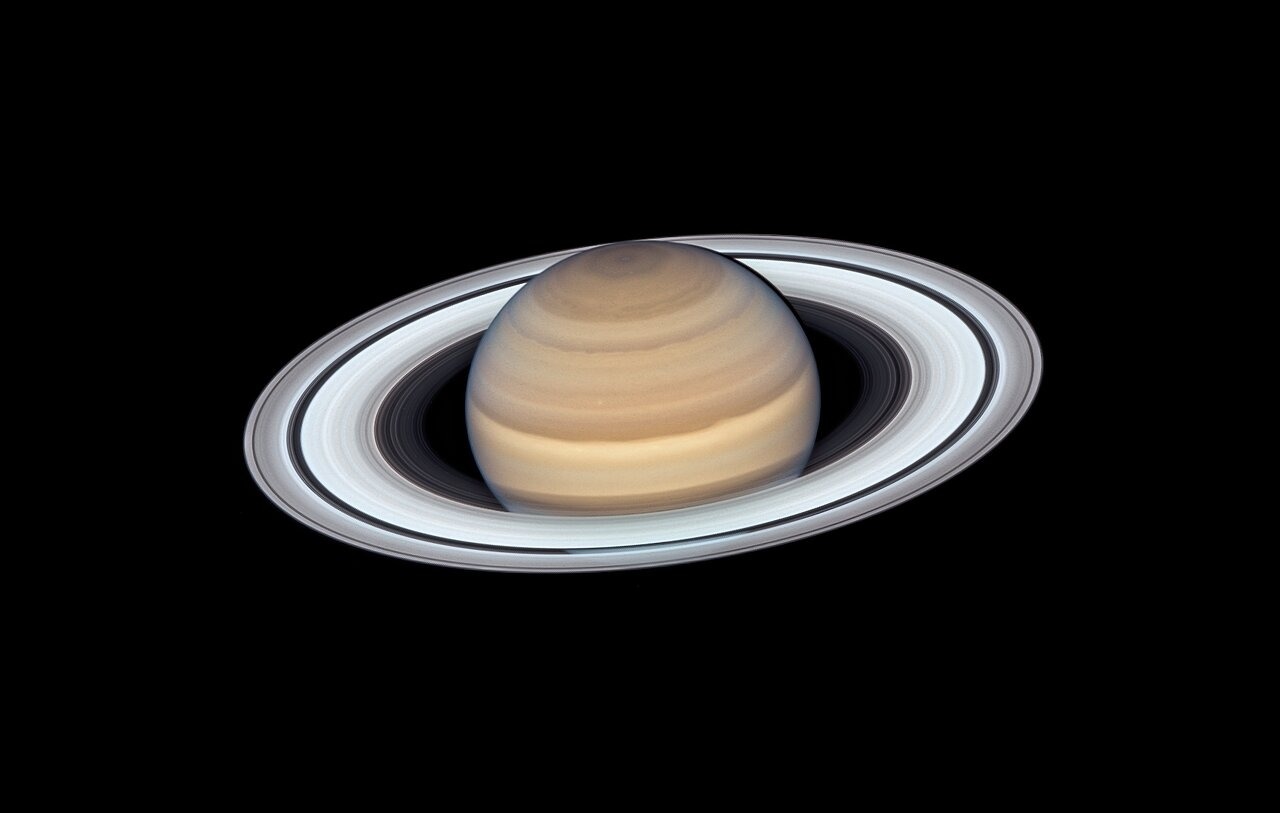Saturn returns
Planet Saturn returns to our skies this autumn.
It was closest to Earth on August 27th.
So now is a good time to look at Saturn in some detail.
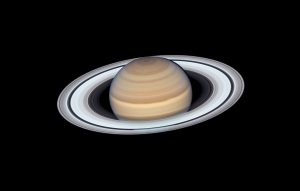
Saturn from HST: NASA, ESA, A Simon (Goddard Space Flight Center)
and MH Wong (University of California, Berkeley
Saturn this year
Saturn is bright in the southern sky.
It lies below the Summer Triangle and the Autumn Square of stars.
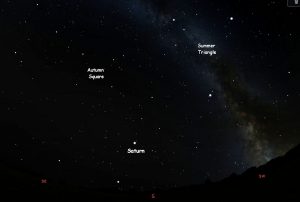
Saturn in the south. Image: Stellarium
Saturn is easy to spot.
It’s brighter than any nearby star and looks pale yellow in colour.
A telescope will reveal its rings and maybe a moon or two.
Quick facts
Saturn:
- the sixth planet in order from the Sun.
- a gas giant and second-largest in the Solar System after Jupiter.
- around 60,000 km across, more than nine times wider than Earth.
- spins quickly, day of 10 hours, 45 minutes.
- a cold planet, cloud temperauture minus 185 degrees C.
- distance 1,400 milion km from the Sun, orbits in 29.5 Earth years.
- named for the Roman god of agriculture and wealth, father of Jupiter.
- gives the Roman seventh day of the week, Saturday, Saturn’s day.
Gas Giant
Saturn is made mainly of hydrogen gas with some helium.
The upper clouds contain ammonia ice, with water ice beneath.
At the planet’s centre is a small rocky core.
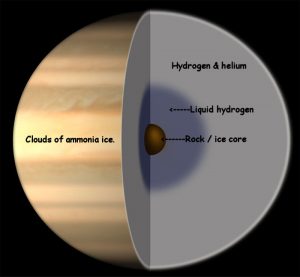
Interior of Saturn. Credit NASA, labels from author
Saturn is the least dense planet in our Solar System.
Given a bath big enough, it would float on water!
History of observation.
Saturn has been known from ancient times.
It is the most distant of the five planets visible to the naked eye.
Galileo observed Saturn with his primitive telescope in 1610.
He noted bulges on either side, which he thought could be moons.
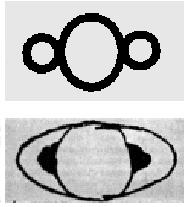
Galileo’s drawings of Saturn.
Using a better telescope in 1655, Christiaan Huygens showed the true nature of the bulges.
They were the rings of Saturn.

Huygen’s drawing of Saturn, showing the size against the size of Earth and Moon.
Huygens also discovered Saturn’s moon Titan.
Giovanni Cassini discovered four more moons and a gap in the rings, the Cassini Division.
Since then, many more moons have been found.
The total as of now is a remarkable 146 moons.
62 of these have names.
We’ll feature some of these moons in a future blog.
Saturn’s rings
Saturn’s rings have made the planet an icon of astronomy.
They are 400,000 km wide, about the distance from Earth to the Moon.
The rings extend from around 7,000 to 80,000 km above the planet.
They are, however, very thin, only one kilometre in depth.
If the rings were a metre rule in length, they would be thinner than a razor blade.
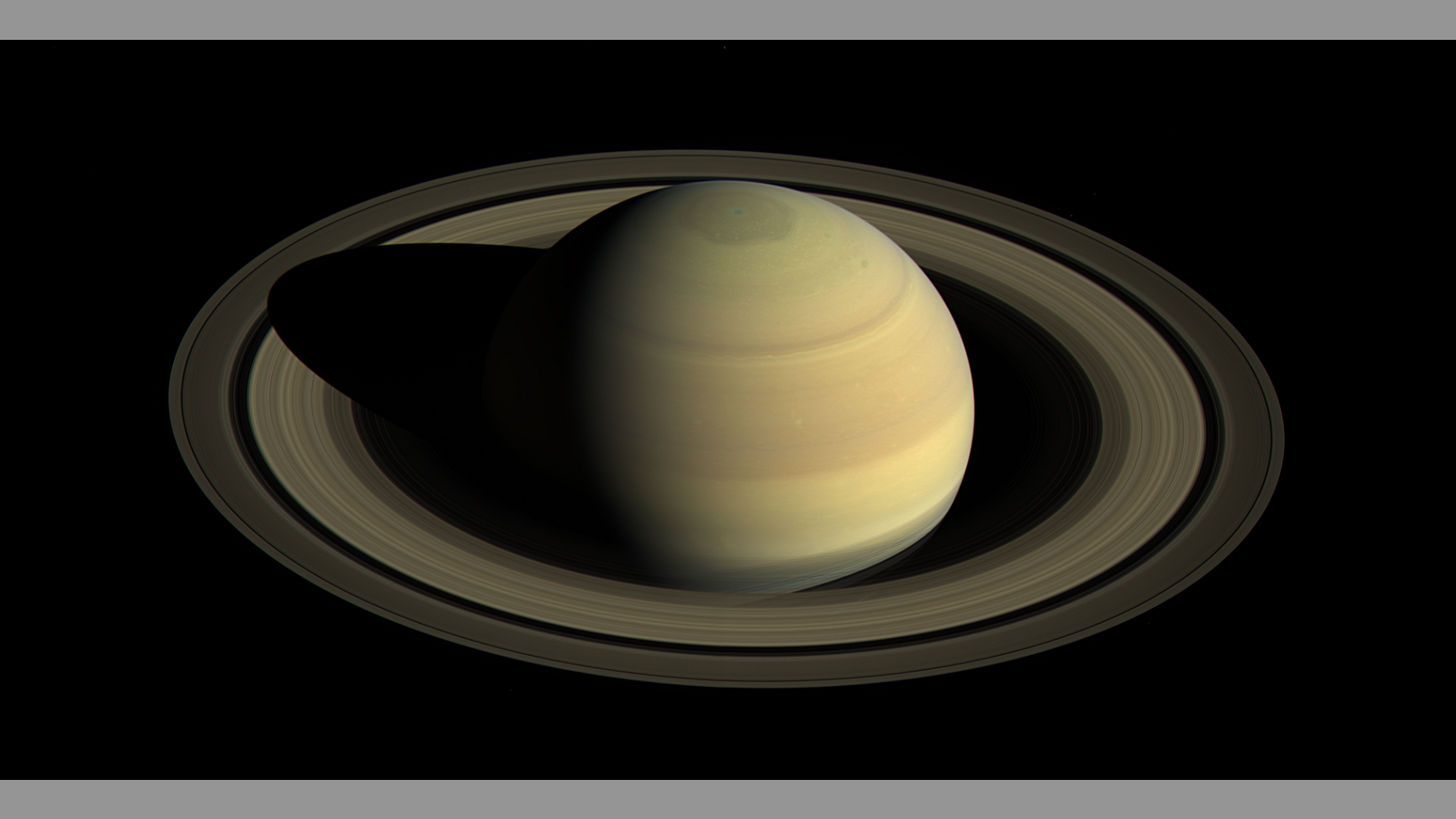
Saturn from Cassini. Credit: NASA / JPL / SSI
The main rings have letters in order of their discovery.
The dimmer grey ring nearest Saturn is ring C.
Then comes bright B and dimmer ring A.
Rings B and A are separated by a space, the Cassini Division.
More rings have been discovered by spacecraft which have visited Saturn.
These missions also revealed that each main ring is made of thousands of ringlets.


Saturn’s ring system. NASA / JPL / Space Science Institute
Composition of the rings
The rings comprise mainly of chunks of water ice.
There are millions of chunks, each around 10 metres across.
Mixed with the ice are small rocks and grains of dust.
Origin of the rings
There are several theories of how Saturn got its rings.
One is that the rings were formed with the planet, from left over material.
However, there is evidence that the rings may be younger than the planet.
So a second theory is that an icy moon used to orbit where the rings are now.
It was drawn towards Saturn and was torn apart by the planet’s gravity.
The fragments of broken moon continue to orbit as Saturn’s rings.
A variation on this theme is that the moon was destroyed by a collision with a comet or asteroid.
The remnants of the collision formed the rings.
Yet another possibility is that the rings came from a huge comet.
The comet approached too close to Saturn.
The planet’s gravity tore it apart to form the rings.
Orientation
As Saturn orbits the Sun, it wobbles slightly.
From Earth we see a variation in the aspect of the rings.
Sometimes the rings appear wide open.
At other times the are edge-on and almost disappear from view.
The views in the image below were computer-generated by Tom Ruen.
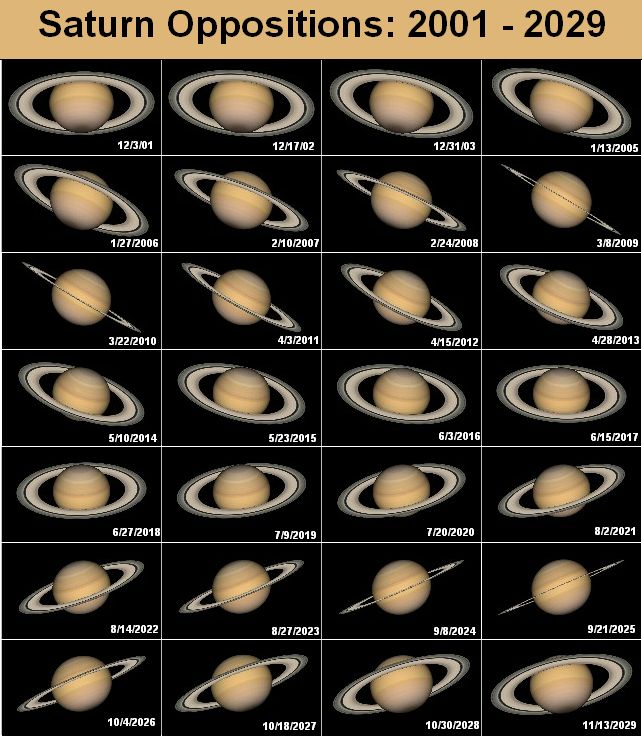
Tom Ruen’s images show Saturn at its nearest to Earth through to the 2020s.
From this year, the rings will close until they are almost edge on in 2025.
Then they will open up again.
By 2029, we’ll see them in their full glory once more.
Space probes
Four NASA space probes have visited Saturn.
They took our knowledge of the ringed planet to a different level.
Pioneer 11
Pioneer 11 flew past Saturn in September 1979.
The probe discovered the faint F ring.
Voyager
Voyager 1 flew by Saturn in November, 1980.
It gave us our first high-resolution images of the clouds, the rings and some of the moons.
It was followed a year later by Voyager 2.
The probe revealed more of the planet’s features and those of its moons.
Cassini
Cassini is the most ambitious probe to visit Saturn so far.
It entered orbit around the planet in July 2004.
The spacecraft took images of moon Phoebe then moved on to Titan, Saturn’s largest moon.
Here the orbiter released the Huygens probe to land on Titan.
Titan is the only moon with a real atmosphere.
Huygens found lakes and seas of liquid hydrocarbons on the moon’s surface.
By 2009, Cassini had found eight more moons.
It’s finale in 2017 was to dive through the gap between planet and rings before a fiery descent into Saturn’s clouds.
You were there!
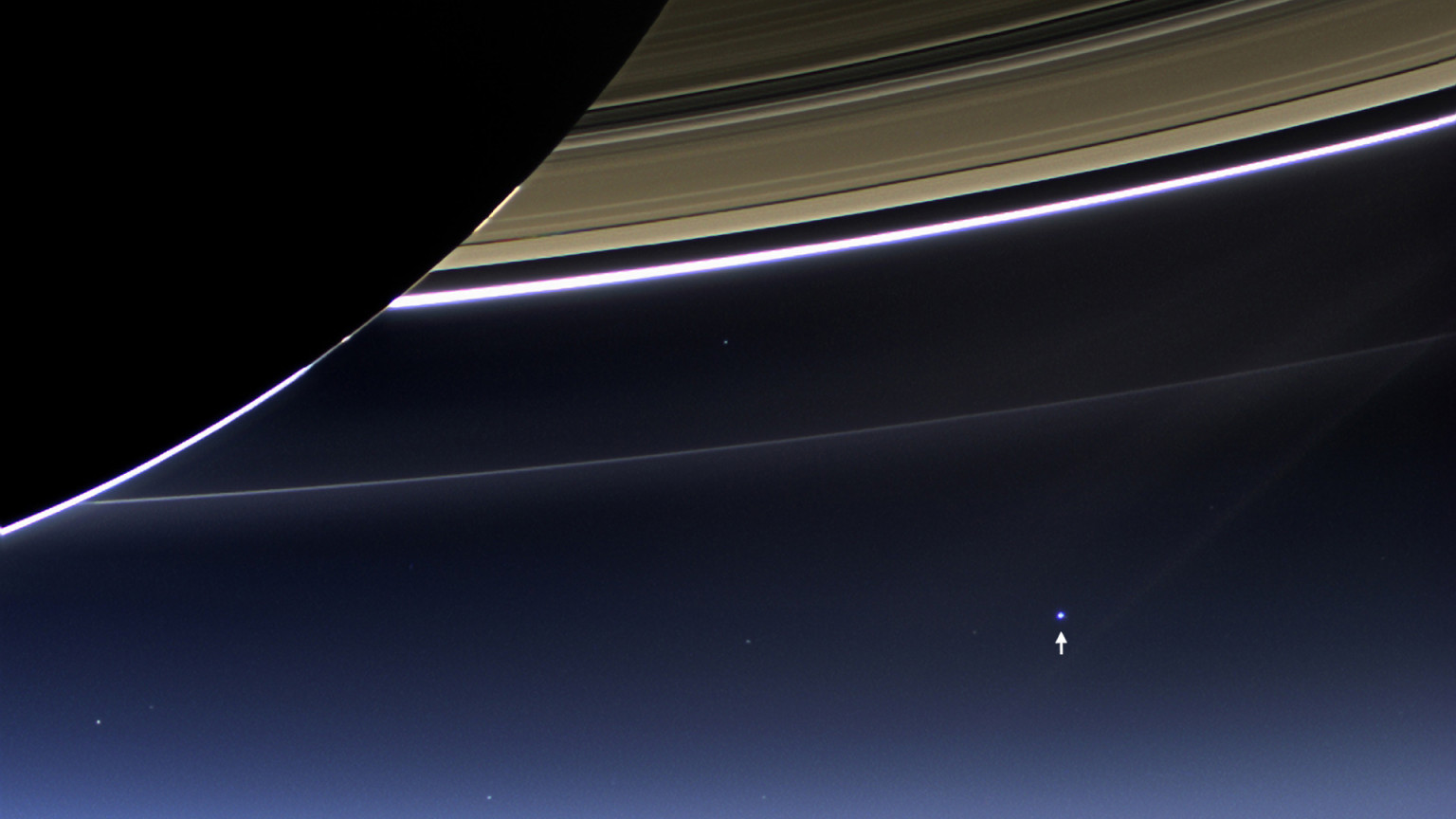
Earth from Saturn, Cassini mission. NASA / JPL / SSI
In 2017, the Cassini space probe was busy photographing Saturn and its rings.
One image captured a small blue dot.
It’s picked out by an arrow on the photo.
That tiny blue dot is our Earth!
We were down there.
I wonder what we were doing as Cassini snapped us from 1.4 billion km away?
And just think.
The whole of humanity was on that tiny dot.
Everyone who has ever lived has spent their life on that small blue dot.
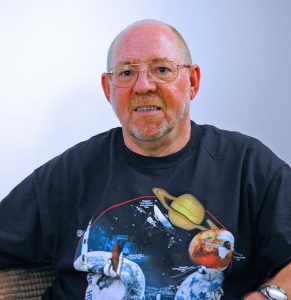
The author: Dennis Ashton is a Fellow of the Royal Astronomical Society and a Wonderdome presenter.
Would you like to hear more Astronomy news?
Do you want to to find out about our upcoming public events?
Follow WonderDome Portable Planetarium on Twitter and Facebook or go to our web site wonderdome.co.uk

